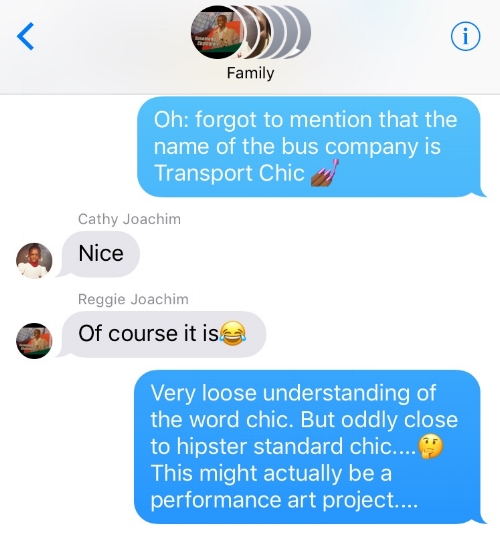Nathalie Joachim’s Fanm d’Ayiti celebrates the women of Haitian song and aims to explore their individual stories as they relate to Afro-Caribbean culture, society, history and music. Fellow flutist Tim Munro sat down with Joachim to reflect on the scope of the project, and how the process has changed her. Below is an edited transcript of Joachim’s words.
In Haiti, the women are badasses. You don’t want to mess with anyone’s Haitian mother. You’re going to definitely be on your best behavior.
I started to focus on three artists: Emerante Morse, Carole Demesmin, Toto Bissainthe. I felt connected to them. Going to Haiti, talking to these women, meeting their families, seeing where they’re from, hearing their deep commitment to Haiti. It felt inspiring. The three paint an interesting portrait. They’re each from pretty distinct eras, musically, but each influenced the other. Many consider these women revolutionaries.
The piece of the puzzle that made Fanm d’Ayiti come together was being in Haiti, recording a children’s choir. They were singing the music for a Catholic church service, accompanied by a drummer who was playing these very distinct voodoo drum patterns. It was two worlds colliding: this Catholic religion passed on through colonialism, and a musical practice that came all the way from Africa.
Photo: Erin Patrice O'Brien
Fanm d’Ayiti is linked by the idea of strength and freedom and empowerment. It is made up of music woven together with some of the recorded testimony of the women I interviewed, and the field recording of the girls choir, and recordings off my grandmother. Half of the material is completely original, the other half are some arrangements of these three female artists.
Photo: Erin Patrice O'Brien
My entire piece has a religious lens. So many of the songs in the show are Haitian voodoo songs. All of the text throughout the whole show is very deeply rooted in religion, whether it is African religion or Roman Catholic. I’ve learned about Voodoo as a practice. There is a stigma attached, but it’s akin to Native American religious practice. Voodoo as a practice is more about storytelling than anything else. Many of the gods are tied to nature.
Nathalie alongside Emerante Morse (July 2017)
The Children's Choir (July 2017)
I’m at the end of this project, but it also feels like the beginning. The show has helped me focus a new direction, to connect deeply to something that has been waiting to be tapped into.
Photo: Erin Patrice O'Brien
For so long I have been attached to the, like, “I’m a classical flutist, and this is what I do.” This is what the world thinks is the most “validated” training. The thing I’m “supposed” to be doing. I have never stood solidly on my ability as a composer. I had been actively writing music, but was very selective about what I was sharing publicly. Censoring my own voice.
Also, in the past I have shied away from what I knew to be my vocal identity, to make myself fit somewhere. I’m definitely not an opera singer…at all. And I feel like people look at me and are like, “This is an African American female, so she’s going to sound like a soul singer,” and I don’t sound like that.
The practice of music in Haiti is very communal, very relaxed. It’s not about who’s been playing the longest, who’s the best, who’s the most trained, who’s recognized as X, Y or Z. It’s just people sharing a piece of themselves as honestly as they can. It’s a style of music that really lacks any pretension, which makes me a better performer. It takes away this need to be perfect.
I never recognized that the many hours singing with my grandmother were also music lessons. To me it was just “Oh, that’s just my time with my grandmother.” But the second I started this project, I realized she trained me so well in the practice of folk singing and folk music in Haiti.
Scenery in Haiti (July 2017)
In this project I’m writing and performing in a way that I would have been scared to do a decade ago. So much of my musical instinct and influence comes from being a kid growing up in Brooklyn, with electronic music and hip hop steeped in my ear. That, combined with my classical training, is of course a valid practice of studying music.
Vocally, this project is the most I’ve been myself. Making music in Haiti happens without abandon. The songs have such deep meaning, and you just give yourself to it. It has resulted in me finding a vocal quality that feels like the most natural.
All of these things are coming together with honesty. Putting myself out there in this way is super-vulnerable. But at the showing in St. Paul and the taping for “On Being,” it was maybe the least stage-fright I’ve ever had. It felt normal. And right.
Tim Munro is a Chicago-based, triple-Grammy-winning musician. His diverse work as a flutist, speaker, writer and teacher is united by a single goal: to draw audiences into an engrossing and whimsical musical world.
FOLLOW NATHALIE JOACHIM
Website: nathaliejoachim.com
Facebook: facebook.com/nathalie.joachim.39
Twitter: @flutronix (twitter.com/flutronix)
Instagram: @njoachim (instagram.com/njoachim)
Youtube: youtube.com/c/nathaliejoachi
FOLLOW TIMOTHY MUNRO
Website: timothymunro.com
Twitter: @lullysfoot (twitter.com/lullysfoot)
Instagram: @timothymunro (instagram.com/timothymunro)
FOLLOW LIQUID MUSIC FOR UPDATES AND ANNOUNCEMENTS
Twitter: @LiquidMusicSPCO (twitter.com/LiquidMusicSPCO)
Instagram: @LiquidMusicSeries (instagram.com/liquidmusicseries)
Facebook: facebook.com/SPCOLiquidMusic
Podcast: Liquid Music Playlist





















































































